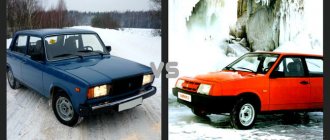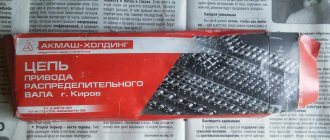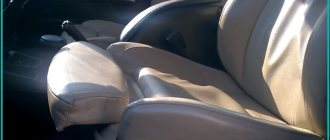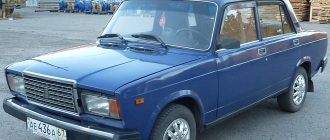| Comparison of dimensions, mm | Lada 2105 | Lada 2107 |
| Modification | 1st generation, 10.1979 — 01.2012, 1.5 l., 71 hp., Gasoline, manual transmission, Rear-wheel drive select another | 1st generation, 03.1982 - 04.2012, 1.5 l., 68 hp., Gasoline, manual transmission, Rear-wheel drive select another |
| Photo | ||
| Country of assembly | Russia | Russia |
| Secondary market price | ~50,000q | ~ 45,000 q |
| Fuel type | Gasoline AI-92 | Gasoline AI-92 |
| Body type | Sedan | Sedan |
| Transmission type | Manual transmission 5 | Manual transmission 5 |
| type of drive | Rear (FR) | Rear (FR) |
| — | — | |
| Engine capacity, cc | 1452 | 1452 |
| Power | 71 hp | 68 hp |
| Maximum torque, N*m (kg*m) at rpm. | 112 (11) / 3500 | 104 (11) / 3500 |
| Fuel tank volume, l | 39 | 39 |
| Number of doors | 4 | 4 |
| Trunk volume, l | 379 | 379 |
| Acceleration time 0-100 km/h, s | 17 | 17 |
| Weight, kg | 976 | 1060 |
| Body length | 4145 | 4145 |
| Body height | 1446 | 1446 |
| Wheelbase, mm | 2424 | 2424 |
| Ground clearance (ride height), mm | 170 | 170 |
| Fuel consumption, l/100 km | 8.8 | 8.5 |
| Rear wheels | 175/70 R13 | 175/70 R13 |
| Number of places | 5 seats | 5 seats |
| Owner reviews | Lada 2105, 1st generation, 10.1979 - 01.2012 VERY cheap to service, can be repaired on the highway. Lack of dynamics, lack of comfort, low quality of spare parts During the 8 years of use it was changed: rear axle gearbox twice, axle shaft assembly, shock absorbers twice, ball joints and silent blocks 3 times, crosspiece, gearbox repair. That's all, except for consumables, the engine has not been repaired and to this day the mileage is more than 230 thousand km. The car has been used by its brother for more than 5 years Warm interior Chassis Passable Comfort | Lada 2107, 1st generation, 03.1982 - 04.2012 Although the “tank” is not for women, I’m already used to it. When I sat down with her for the first time (she neighed like a horse), I don’t know why...probably because she was tossed in all directions. I live in a rural area not far from the city, so I have to drive over bumps, around the city, and on the highway. There are no problems driving around the collective farm, because... The suspension is soft, in the city it hasn’t gone anywhere yet, but on the highway it’s amazing! It throws its ass in all directions, holds the road poorly, and has difficulty taking turns. But really, I’m not afraid that it will break and I’ll get into money or lose money (because of the relaxed handbrake, I kissed the fence =) I don’t know about other drivers, but after driving a “bucket” my back hurts terribly = (the lighting in the low beam is bad, I constantly have to peer at the road, almost into a hickey with the windshield. The turn signals always fail at the wrong time. There was no protection, so when I was driving along the highway in the pouring rain in extreme conditions, water poured straight into my face through the steering wheel and from under the gearbox almost…..well…well, it’s okay, the car is still fire, I can’t even dream of anything better, and I drive I’ve been using it professionally for 2 years already (not like chickens on automatic machines). Sorry to anyone I offended =)))))))))))))))) this fucking 4-mortar, I suffered! From third I changed it to 5 and (fire!) I changed: starter, retractors, chocolate bar, pendulum, anchor, fuel pump, brushes, oil, float, steering wheel (the old one broke while driving, I drove home using the key - this you should have seen it!), brake pads, the generator was rebuilt twice, but the engine runs like a clock, doesn’t consume oil. The brakes are of course lousy, you have to brake almost a kilometer away. Durable, the engine always starts in a jiffy Cheap to maintain Fuel consumption, brick aerodynamics. Quality of spare parts Cheap spare parts Breaks often |
What engines were installed on the 2105?
The VAZ 2105 was equipped with the same 1.3 liter engines - VAZ 2101. The main difference between the modification is the use of a belt drive. A toothed belt was used instead of a metal chain, which made it possible to slightly reduce noise when the engine was running.
Interesting materials:
How to farm TF2 items? How should the filter be in the water? How is the price of gas determined? How is the legislative branch formed in a democratic state? What does the author mean by Bicameral? How is Hooke's law formulated? Physics 7th grade? How to tell fortunes about the groom on Pokrov? How to harmonize the energy of Mars? How to gas on the spot with an automatic machine? How does government debt affect the economy? How is meat and bone meal prepared?
Is it better to buy a VAZ-2106 than a VAZ-2107, and why
VAZ-2106 and 2107 are not the worst representatives of the classic Zhiguli line. Both cars were so popular that in Soviet times they became the hallmark of the domestic automobile industry, and their production continued into the 21st century. The models mentioned above are rear-wheel drive subcompacts. Due to their great similarity, potential buyers cannot always figure out which car is best for them. This article will help you make your choice.
- VAZ-2106 – history
- Engine 2106
- VAZ-2107
- What do the models have in common?
- What is the difference
- What to buy
Which is faster: VAZ 2107 or 2109
In total, the “Seven” has 13 modifications with different engines, which were equipped with four- and five-speed manual transmissions. More often there are three engines on sale: a “five” carburetor 1.3 liter with 64 liters. s., carburetor 1.5 l per 71 l. With. and injection 1.6 liters for 72 liters. With. On the last two, the timing drive is chain, which means that most car enthusiasts will not be able to service it themselves. In the service, the replacement procedure costs about five thousand rubles.
Article on the topic: DIY car door molding
The “nine” also has three engine options. Depending on the years of production and modifications, their power varied: carburetor 1.3 liters - 64–68 liters. s., 1.5 l - 68-77 l. With. and injection 1.5 l - 77.8 l. With. The timing drive here is belt driven and can be easily changed even on the highway. And in general, 2109 is easier to maintain.
It's the little things that most often fail in motors. For the “nine” it is a starter solenoid relay, for the “seven” it is a pump. The cost of the part is about 1,500 rubles.
You will also have to deal with adjusting the valves and carburetor. You can learn to perform both procedures yourself. And in general, rivals can be good teachers in terms of self-repairing a car.
The VAZ-2109 is faster than the Sema in accelerating to 100 km/h by as much as 2.5 seconds (12.5 seconds versus 15 seconds, respectively).
Interior
The interior of the car generally follows the contours of the body - it is just as angular, which gives it a progressive look in comparison with the smooth lines of the VAZ-2101 and 2103. There are few differences, as in the appearance:
1. Instrument panel.
The instrument panel in the Lada 2107 is distinguished by a convenient location for the radio and additional instruments. They include a digital clock, indicator lamps (brake pad wear, heated rear window, whether the driver is wearing a seat belt), and a cigarette lighter.
The switches located around the instrument cluster in 2105 are located in front of the gearshift lever in 2107.
2. Instrument cluster.
The instrument cluster in the “five” provides the driver with only basic information about the current state of the car: speed, coolant temperature, amount of fuel, voltage in the on-board network, total mileage.
The instrument cluster in the “seven” is additionally equipped with an econometer, a tachometer and a daily mileage counter.
In the fifth Lada model, seats from 2103 were installed with a slight modification - they were equipped with a headrest. The seventh model was equipped with anatomical seats.
Oka (1987—2008)
VAZ-111 (Lada Oka) is a Russian ultra-small class car. About 700 thousand models were rolled off the assembly line. The body type is a three-door hatchback. In an effort to reduce the size of the car, the developers sacrificed the harmonious appearance, which is why Oka was popularly nicknamed “Cheburashka”. Characteristic appearance features:
- miniature body;
- angular lines;
- rectangular optics;
- bumper made of unpainted plastic;
- shortened overhangs;
- short wheel arches;
- roof pillars too thin;
- large glass area.
Article on the topic: Emulsion in the engine, what is it?
The Magnificent Six: why the VAZ-2106 was the best Zhiguli model
Among the whole variety of rear-wheel drive VAZ cars, every true “Zhigulista” has his own favorite model: some like naive round-headed “kopecks”, others love the more angular cars of the fifth family, others are generally “crazy” for station wagons... However, a significant part of the fans Tolyatti classics are confident that the VAZ-2106 is “the best Zhiguli of all time,” the pinnacle of the rear-wheel drive line of the Volzhsky Automobile Plant. The most varied arguments are given. We will try to put these puzzles together into a single picture, which will help answer yes or no to the question: were the “six” really the best, and why?
Article on the topic: The temperature of the VAZ 2114 engine drops while driving
A little history
The successive Zhiguli model with the “working” index VAZ-21031 (similar to the VAZ-21011) was supposed to become a modernized “three-ruble note”, which we remembered quite recently . If the VAZ-2103 was positioned as a luxury version of the regular Zhiguli, then the “six” was supposed to become an even more comfortable and dynamic version of the “troika” itself. So to speak, complete luxury.
At the same time, the designers still did not have carte blanche for a serious modernization of the body - as in the case of the “three-ruble note”, they were only allowed to slightly modify the front and rear parts. At the same time, the new car had to get rid of the “patina of the sixties” - more angular lines and significant use of plastic parts in decoration were rapidly coming into fashion. In addition, the designers had to solve the opposite problem in this way - a more “luxurious” model had to be made cheaper at cost than the previous one, abandoning complex and expensive parts to produce, such as the radiator grille framing the optics and bumpers with L-shaped ends.
The VAZ designers coped with their task “excellently,” which we will talk about a little later and in more detail. In the meantime, a little chronology. The first “six” was assembled at the end of 1975, and mass production of the VAZ-2106 began in February 1976. In December of the same year, the “six” became the three millionth car produced in Tolyatti, and in June 1978 – the four millionth. A year later, the “six” was also noted as the millionth Soviet car delivered to the countries of the Union for Mutual Economic Assistance (CMEA).
Article on the topic: How to properly insert a xenon lamp
Modification for the German market from the importer Deutsche Lada
Like previous models, the “six” was also produced with right-hand drive
At the Volzhsky Automobile Plant, the sixth model was produced until 2001 - that is, exactly a quarter of a century. And in 1998, famous for its default, the “geography of distribution of the six” became more extensive, because its production was partially transferred to other enterprises - first to Syzran, and then to the IzhAvto enterprise in Izhevsk, where it was produced until the end of 2005. Thus, the “six” was produced at different car factories for a total of exactly thirty years - one of the longest assembly line lifespans for a specific model. Of course, the production process was not without upgrades and updates, which did not always benefit the car itself. And yet, how did the “six” manage to earn such love and respect from Soviet and Russian motorists? After all, cars with characteristic plastic “glasses” around four round headlights have produced no less than four million copies over three decades - again, almost a record figure for one specific model.
Technique
VAZ designers V. Antipin and V. Pashko were able to really modernize the “three-ruble note” using minimal means, making its appearance stricter, more laconic and at the same time “fashionable”.
Plastic “fangs” and ends of the bumpers, headlight frames, taillights that were completely original in design, other caps – it would seem like small touches, but the “six” was really perceived by contemporaries as a new model, and not a modification of the usual “troika”.
Article on the topic: Dashboard of Lada Granta photo
The Six looked even more prestigious than the VAZ-2103
At the same time, the designers and artists faced a very difficult task: they had to improve the Italian design without spoiling it. By that time, VAZ had already acquired sufficient experience and had a certain taste, which made it possible to make the “six” even better.
BEFORE LATER DEVELOPMENTS OF THE FIFTH FAMILY, THE VAZ-2106 STILL HAD ONE UNDOUBTED “EXTERIOR” ADVANTAGE – ITS APPEARANCE WAS MUCH MORE COMPLETE.
Indeed, on the “zero fifth” and “zero seventh” models, the angular bottom was by no means ideally combined with a smooth roof and a small slope of the pillars and windows (especially the side ones).
There were also plenty of changes in the interior. In the interior of the “six”, the attention was attracted by the completely velor upholstery of the seats; in addition, headrests appeared on the front ones, and in the instrument cluster there was a separate indicator for insufficient brake fluid level and a rheostat that smoothly changed the brightness of the backlight.
Even such an insignificant “trifle” by today’s standards as an alarm system first appeared on the “six”. Another new feature is a steering wheel-mounted windshield washer control instead of the foot-operated switch found on earlier models.
ANOTHER IMPORTANT ADVANTAGE OF THE VAZ-2106 OVER OTHER ZHIGULI MODELS WAS HIDDEN UNDER THE HOOD.
As in the case of the 1.3-liter version 21011, the designers increased the cylinder diameter from 76 to 79 mm, which, in combination with the “triple” piston stroke, led to an increase in the displacement to 1.57 liters.
Article on the topic: Heating oil in a 220V engine
Thanks to its long stroke, the engine increased torque by 12% compared to the 2103 engine, becoming noticeably more torquey at low speeds. At the same time, the designers made the transmission of the “six” much more “fast”, reducing the gear ratios of some gears and the main pair. As a result, with a calculated engine power of 80 hp. The Lada sixth model crossed the speed limit of one and a half hundred, accelerating to 154 km/h.
The 2106 engine was objectively the pinnacle of the Soviet small car industry, because later “classic” models used engines of smaller displacement and power, and front-wheel drive “one and a half” produced only 70 “horses”.
Of course, over time, the “Seven” had a modification with an engine from the VAZ-2106, designated 21074, and in the Niva, already in the post-Soviet period, the displacement was increased to 1,700 “cubes”.
DURING THE USSR, THE “SIX” IN THE REAR-WHEEL LINE WAS REALLY THE MOST POWERFUL SOVIET CAR WITH A MAXIMUM DISPLACEMENT ENGINE.
To be fair, not the overwhelming majority were released. The most widespread modification was the 21061 with a one and a half liter 2103 engine, and in the late eighties, under the hood you could most often find the weakest engine possible, that is, the 1,300 cc unit 21011, which was installed in the body of the sixth model until 1994.
Comfort
The six was close in terms of noise insulation and smoothness to its “ancestor” of the third model. And after the “three-ruble” was discontinued in 1985, it turned out that the quietest, softest and smoothest was the “six”. In addition, the new models (2105 and 2105) were still inferior to the “six” in terms of the quality of interior finishing, because the operating experience of the “fives” and “sevens” showed that their interiors with molded plastic parts are much noisier than the latter.
Article on the topic: Serial connection of subwoofer coils
The interior of the VAZ-2106 cannot be softer. In subsequent models, there was noticeably more hard plastic.
And after another 10-15 years, when the interiors of all Ladas became equally outdated, the interior of the sixth model began to look “classically noble”. Just look at just one instrument cluster, which consisted of five separate round instruments! And at the end of the nineties, the arrow “watches” were already perceived in a completely “Jaguar-like” way.
Alas, NOT EVERYTHING REACHED FROM THE LUXURY OF YEARS OLD TIMES TO THE END OF THIS MODEL'S CONVEYOR LIFE.
Gradually, the wood-effect film was replaced by plastic, velor gave way to much more prosaic textiles, instead of chrome on the outside and inside, black plastic began to be increasingly used, and the color scheme of the interior noticeably “grayed”, losing the bright colors of previous years.
On export “sixes” there was PTF under the rear bumper
On the other hand, in cars of later releases such important “little things” appeared, such as an electric heated rear window and a rear fog lamp.
VAZ-2106 DID NOT LOOK AGAINST A POOR RELATIVE AGAINST FRONT WHEEL WHEEL VEHICLES, BECAUSE IT WAS NOTICELY MORE SPACIOUS AND QUIET THAN THE “CHISEL”.
But not everyone needed the excellent stability and controllability characteristic of Sputniks. That is why Soviet motorists, especially the older generation, if possible, chose not the most modern VAZ equipment, giving preference to the time-tested and so comfortable “six”.
A “blanket” of sound insulation under the hood is an invariable feature of luxury Lada cars
Article on the topic: How to add distilled water to the battery











